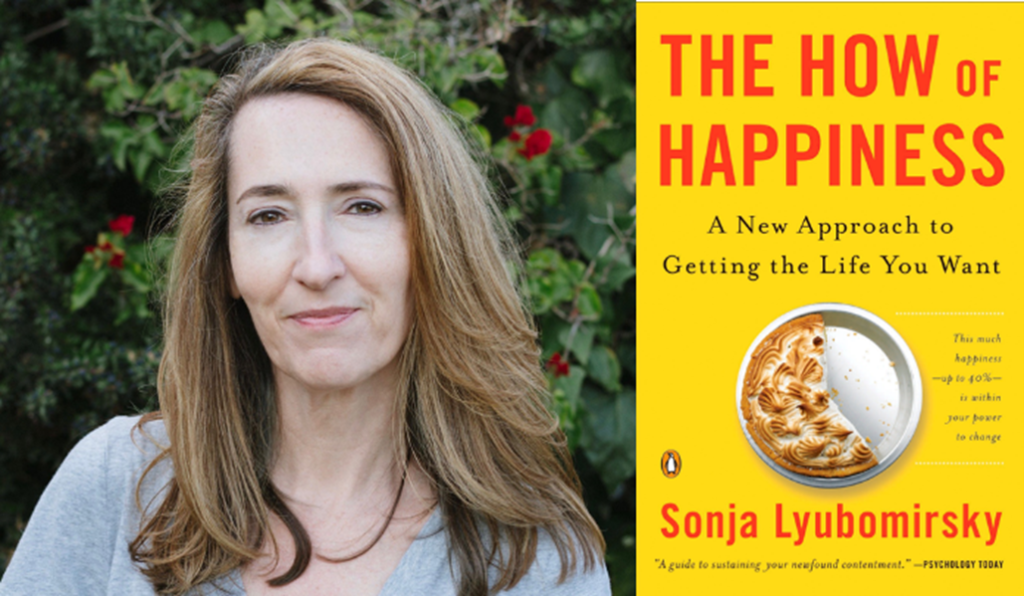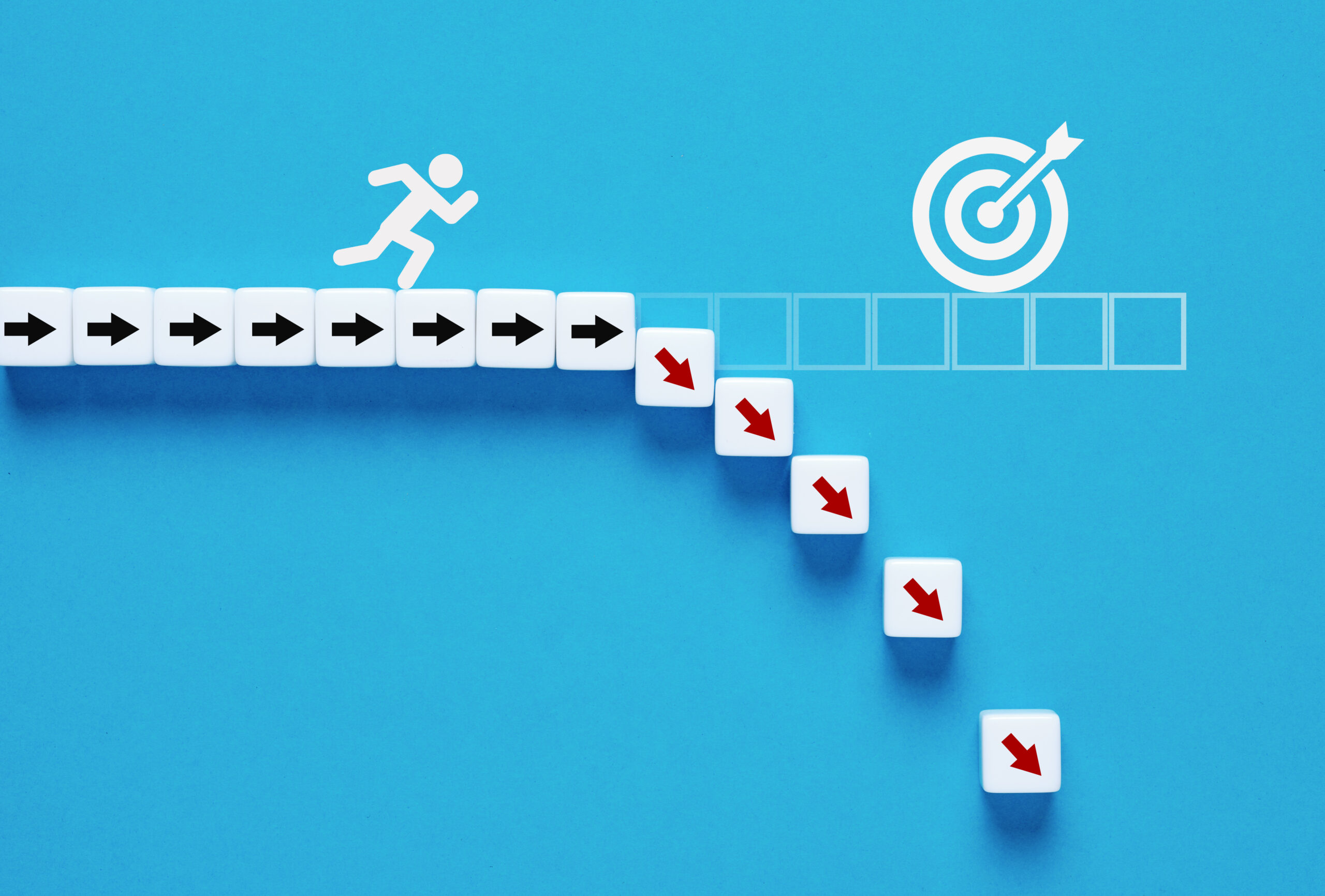Article Summary:
This article addresses best practices in goal-pursuit, broken down into four areas: mindset, people, techniques, and systems. It’s the fourth article in a four-part series on goals.
+++
Many of us are no strangers to setting goals. We’ve been doing it for a long time.
But how are we doing when it comes to goal attainment? Do we know?
Many of us fall short of our goals fairly often. Sometimes the problem is in the goal-setting process. (See my article, “Goal-Setting Practices: Beyond SMART Goals.”) But in other cases, the problem is in our goal-pursuit process—something very few of us have learned about.
This article outlines best practices in pursuing goals. These practices are important not only because they can dramatically boost our chances of achieving our goals but also because the goal-pursuit process can boost our happiness. In her book, The How of Happiness, researcher Sonja Lyubomirsky notes the following:
“…the process of working toward a goal, participating in a valued and challenging activity, is as important to well-being as its attainment…. Working toward a meaningful life goal is one of the most important strategies for becoming lastingly happier.”
How to Pursue Goals: Best Practices
It’s one thing to determine which goals to set and another thing to determine how best to go about pursuing our goals. What does the research tell us about effective goal-pursuit? Here are the findings, broken down into four principal areas: 1. mindset, 2. people, 3. techniques, and 4. systems.
1. Goal-Pursuit Mindset
Here are things we can do to ensure we have a productive mindset for our goal-pursuit efforts:
Reflect on the importance of the goal.
This should include how our goal relates to our purpose, core values, and vision of the good life. Doing so will help us achieve more clarity and boost our motivation, both of which are essential. We’re wise to revisit this during the process, especially if our motivation begins to fade.
Visualize success or failure, depending on our motivation level.
Visualization can help us in our goal-pursuit, but whether and how it does so depend on our motivation level—specifically whether we’re already motivated to do the things necessary to achieve the goal or not.
- If we’re already motivated to do the things necessary to achieve a goal, then yes, spending some time (e.g., one to five minutes) visualizing the scenario of achieving our goal can be helpful because it focuses our mind on a successful result.
- But if we’re not already motivated to do the things necessary to achieve a goal, then such visualization probably won’t be helpful. Instead, we should spend some time (again, one to five minutes) visualizing failure to achieve our goal and what that would feel like. In that scenario, we’re essentially scaring ourselves into doing the work necessary in order to avoid the pain and regret of failure. This works because it recruits certain elements of our autonomic nervous system and creates shifts in the release of hormones like epinephrine (adrenaline), norepinephrine, and dopamine.
Focus on who we wish to become through our goal-pursuit, not just on what we want to achieve.
If we become the kind of person who makes healthy food choices or who exercises daily, those behaviors become automatic. We don’t have to keep engaging our willpower. If we focus only on what we want to achieve, we risk a letdown when we’ve achieved our goal. We essentially put ourselves on an endless goal-pursuit treadmill. And we’re never satisfied there with who or where we are. We just keep running. Instead, we’re wise to gain clarity on what success, happiness, and a good life actually mean to us.
“The most effective way to change your habits is to focus not on what you want to achieve, but on who you wish to become…. Your identity emerges out of your habits. Every action is a vote for the type of person you wish to become.”
-James Clear, author
Anticipate setbacks.
Don’t expect goal-pursuit to run smoothly all the time. Adopt a mindset of vigilance. We’re all imperfect and we all encounter changing contexts and new challenges. If or when there’s a roadblock or letdown, commit to getting back on track right away.
2. The People Factor in Goal-Pursuit
Here are things we can do to make sure we’re connecting with people effectively as we pursue our goals:
Identify people who can help us achieve our goals.
Goal-pursuit is not a solo endeavor. Sometimes we can save a lot of time and hassle by getting input or encouragement from people who have walked a similar path.
Recruit someone to hold us accountable for consistent work toward our goals.
When we pair up with others or have a trainer, coach, or mentor to guide us through the process, we boost our chances of sticking with the process. Group support is one of the reasons groups like Alcoholics Anonymous and others are so effective. According to the research, it doesn’t help as much to tell people broadly about our goal, such as by announcing it publicly on social media. Why? Because the positive feedback we get from others tends to dissipate quickly. Better to have a consistent accountability partner or support group.
Surround ourselves with people who support our goal-pursuit (or who have similar goals).
There’s strength and safety in numbers. And there’s value in becoming part of a group or community of people committed to goal-pursuit. We’re social beings, so we don’t want others to view us as someone who lets others down or who doesn’t honor commitments.
3. Goal-Pursuit Techniques
Here are techniques to employ when pursuing our goals:
Devise strategies to make pursuing our goal(s) more enjoyable.
For example, are there any parts of our goal-pursuit process that we can engage in with a friend? Can we do the work in an enjoyable setting and at a time in which we can focus without interruption? Can we find ways to employ our strengths and passions when pursuing our goals—and get help from people who have strengths in areas where we need help?
Employ “implementation intentions.”
It’s important to engage in planning and map out our time with a clear roadmap. According to the research, using “implementation intentions”—specific plans attached to our goals that spell out when and where we’ll do things—can more than double the probability of achieving challenging goals. (1) Hundreds of studies in the research literature have demonstrated the efficacy of implementation intentions.
Part of the value here is anticipating obstacles and thinking about ways to overcome them. Since our motivation is usually highest when we’re setting a goal, this approach can keep us from abandoning our goal when things get difficult. The formula for an implementation intention is as follows:
“I will (BEHAVIOR) at (TIME) in (PLACE).”
Here’s an example: “I will exercise for 30 minutes at the gym during my lunch break.” In a study of 248 people and their exercise habits reported in the British Journal of Health Psychology, researchers placed the people into three groups: a control group (asked to track how often they exercised), a “motivation” group (asked to track their workouts and to learn from the researchers about the benefits of exercise), and a “plan” group (who got the same presentation as the second group but were also asked to formulate implementation intentions for when and where they’d exercise).
The results: a much higher percentage of people in the third group exercised at least once a week (91% vs. 38% in the control group and 35% in the motivation group).
Recommendation: write down our plans by hand. Why? Doing so engages our neural circuitry and embeds knowledge in our nervous system. It’s ideal to have a measurable amount of time we’ll spend each week in our goal pursuits (e.g., go to the gym X times per week for at least 45 minutes each time).
Write out our top-priority goal each day on a new Post-it note and place it in a different spot each day.
This will help keep it top of mind. If we write out one reminder and place it in the same place for weeks, we’ll stop noticing it. It becomes almost invisible. The key is not only daily reinforcement but also variety.
Break more challenging and complex goals down into smaller chunks of sequential milestones or sub-goals.
This can help us avoid the prospect of losing motivation along the way. Motivation tends to be high at the beginning, with the excitement of launching, and near the end, when the finish line is in sight, but often flags in the middle.
Reward ourselves for successful completion of some (but not all) milestones along the way toward our ultimate goal. With this approach, we avoid the trap of using achievement of the goal itself as the only reward. Tip: try “random intermittent reinforcement.” Essentially, randomly determining whether we get such a mini-reward along the way is better than giving ourselves a reward for each milestone. Here we’re borrowing a tactic from casinos, which use random reinforcements to keep people gambling at the slot machines. Essentially, we’re keeping ourselves primed for reward-seeking—albeit through productive behavior.
Review progress and make adjustments as we go.
If need be, we can adjust our goals. Some goals become obsolete as things change around us. In other cases, we should stop pursuing a goal—and perhaps start pursuing a different one.
4. Goal-Pursuit Systems
We’re wise to develop systems and habits that increase the likelihood of goal attainment instead of simply setting goals and trying to reach them.
“Goals are about the results you want to achieve. Systems are about the processes that lead to those results…. Goals are good for setting a direction, but systems are best for making progress. A handful of problems arise when you spend too much time thinking about your goals and not enough time designing your systems….
You do not rise to the level of your goals. You fall to the level of your systems.”
-James Clear, Atomic Habits
Here are things we can do to build systems and foster habits that contribute to our goal-pursuit efforts:
Use a daily log to track progress toward our goals.
As the saying goes, we don’t get what we don’t measure. It’s not only measurement that makes this effective but also progress. Harvard Business School professor Teresa Amabile and her colleagues spent many years studying the psychological experiences and performance of people doing complex and creative work in organizations. Through this work, they identified the power of small wins and what they call the “progress principle”:
“Of all the things that can boost emotions, motivation, and perceptions during a workday, the single most important is making progress in meaningful work. And the more frequently people experience that sense of progress, the more likely they are to be creatively productive in the long run. Whether they are trying to solve a major scientific mystery or simply produce a high-quality product or service, everyday progress—even a small win—can make all the difference in how they feel and perform.”
-Teresa M. Amabile and Steven J. Kramer, “The Power of Small Wins,” Harvard Business Review, May 2011
In an attempt to discover what leads to a positive inner work life (a favorable set of emotions, perceptions, and motivations), they compared the events from workers’ best days at work to those on their worst days. Their finding:
“The results were startlingly clear: the single most important contributor to positive inner work life was simply making progress on meaningful work. This is the progress principle. In fact, 76% of our participants’ very best days involved making progress. This dwarfed any other kind of event mentioned in the diaries on those days.”
For the progress principle to work, they found, the work must be meaningful in some way to the workers—not necessarily in the sense of lofty aims but rather in the sense of working on valuable products or services for customers or otherwise “contributing to something worthwhile.” What characterized their worst days at work? When workers experienced setbacks or had their progress blocked. (2)
According to social psychologist Jonathan Haidt in his book, The Happiness Hypothesis, “Pleasure comes more from making progress toward goals than from achieving them.”
Employ reliable mechanisms to help ourselves stick with the goal-pursuit process.
Such mechanisms will come in handy if our motivation flags or if we fall into the procrastination trap. There are many possibilities. For example, we can commit to sending weekly progress reports to a friend or colleague. According to research, people who did this achieved a significantly higher percentage of their objectives.
With a “don’t break the chain” approach, we can keep a tally of how many days in a row we’ve followed our plan, and we have to start over if we miss a day. This approach gives positive reinforcement for consistent effort and negative feedback when we fall short. Example: we can take a large calendar with the entire year on one page and hang it on a wall. For each day that we accomplish our predetermined tasks, we place a big red “X” over that day on the calendar.
With a “precommitment” approach, we promise a friend that we’ll give them money for each day we miss our targets. The idea is to give ourselves strong incentives to continue with the daily work.
With a “measure backward” approach, we take stock of progress at the end of each week on key metrics relevant to our goal, showing our progress and making us want to avoid the pain of falling short.
And with the “paper clip method,” we place two jars on our desk: one filled with paper clips and another that’s empty. Whenever we take a distinctive step toward our goal, we take one paper clip out of the full jar and place it into the empty one. We keep going until we’ve achieved our goal.
Prime our environment to promote habits of goal-pursuit.
Too often, our environment works against our goal-pursuit, for example, via distractions and temptations that waste our time. (That can include some of the people around us.) James Clear calls our environment the “invisible hand” that shapes our behavior. “Create an environment,” he advises, “where doing the right thing is as easy as possible.” Example: set out our workout clothes the night before so we’re primed to exercise in the morning.
Leverage technology to help us automate our goal-pursuit.
We can use technology to automate things that we do, or should do, repeatedly (e.g., automatic deposits in our savings accounts). Also, we can use our digital calendar to ensure we’re focusing on the right things at the right time, building goal-pursuit activities into our schedule and benefiting from the digital reminders. We can also use tools like focus/silent mode, habit trackers, and streaks on our digital devices.
Eliminate the triggers that get in the way of our goal-pursuit.
We can remove the television and other devices from the bedroom and turn off smartphone notifications. Also, we can delete apps or games from our devices, and we can stop putting junk snacks in the pantry.
Reflection Questions
- Which of these goal-pursuit practices are you already employing?
- Which new ones will you try?
- How else can you improve your goal-pursuit efforts?
Tools for You
- Goal-Setting Template to help you set goals you can achieve based on best practices
- Goals Guide: Best Practices in Setting and Pursuing Goals, a 30-page guidebook to walk you through this important process
- Traps Test (Common Traps of Living) to help you identify what’s getting in the way of your happiness and quality of life
- Quality of Life Assessment to help you discover your strongest areas and the areas that need work and then act accordingly
Related Articles and Resources
- “The Benefits of Setting and Pursuing Goals”
- “The Most Common Mistakes in Goal-Setting and Goal-Pursuit”
- “Goal-Setting Practices: Beyond SMART Goals”
- “The Problem with Lack of Focus—And How to Fix It”
- “The Incredible Benefits of Being Action-Oriented”
- “The Trap of Bad Habits—And How to Break Them”
- Huberman Lab Podcast, “Goals Toolkit: How to Set & Achieve Your Goals,” August 27, 2023
- John Doerr, “Why the Secret of Success Is Setting the Right Goals” TED talk
Postscript: Inspirations on Goal-Pursuit
- “Success is the product of daily habits—not once-in-a-lifetime transformations.” -James Clear, author
- “We are kept from our goal not by obstacles but by a clear path to a lesser goal.” -Robert Brault, author
- “What you get by achieving your goals is not as important as what you become by achieving your goals.” -Zig Ziglar, author, salesperson, and speaker
- “…every organization, if it wants to create a sense of alignment and focus, must have a single top priority within a given period of time.” -Patrick Lencioni, The Advantage: Why Organizational Health Trumps Everything Else in Business
References
(1) Gollwitzer, P.M., and Brandstatter, V. (1997). Implementation intentions and effective goal pursuit. Journal of Personality and Social Psychology, 73(1), 186.
(2) The negative effects of those blocks on progress were, according to the research, “two to three times stronger than the positive effects of progress.”
++++++++++++++++++++++++++++++
Gregg Vanourek is a writer, teacher, TEDx speaker, and coach on personal development and leadership. He is co-author of three books, including LIFE Entrepreneurs: Ordinary People Creating Extraordinary Lives (a manifesto for integrating our life and work with purpose, passion, and contribution) and Triple Crown Leadership: Building Excellent, Ethical, and Enduring Organizations (a winner of the International Book Awards). Check out his Best Articles or get his monthly newsletter. If you found value in this article, please forward it to a friend. Every little bit helps!












